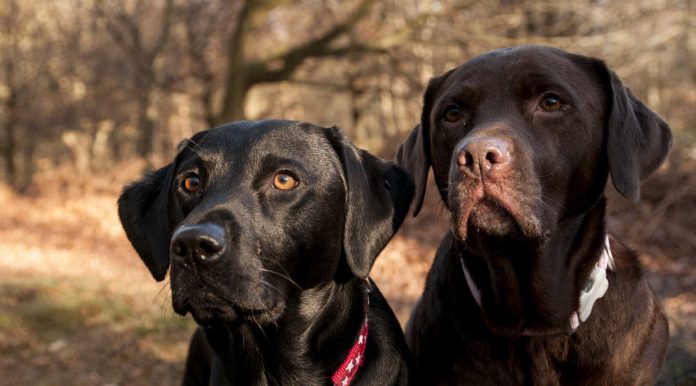The best age gap between dogs is between two and six years. Buy a pair of puppies is tempting, but early bonding, training and socialization require a lot of individual focus. If you can’t give your new puppy your full attention, they can become more attached to their canine friend than their human family.
Likewise, your adult dog needs to be comfortable with puppies, and not so elderly they have extra care needs.
Should I get two dogs close together in age?
Recently I received a question from the owner of a four month old puppy. The lady in question was thrilled with her dog and considering a new puppy as a friend.
She had heard that a close age gap can cause some top dog issues. And wanted to hear my thoughts on the subject.
The best age gap for you?
Every family is unique. Dynamics and the dogs are all different. I cannot tell you that you’ll have an easy ride, or that the new additions to your family will be a disaster. I can only tell you about probabilities.
And point out that there are certain problems that commonly arise when two puppies are the same age, or quite close in age.
Should I get two puppies from the same litter?
Some people think it is a great idea to get two puppies at once. After all, they will be company for one another. You will struggle with this unless you are an experienced dog trainer, or very lucky.
Not especially at the beginning, when two puppies are company for one another, but later, as they need training and guidance.
What about staggered puppies?
You can stagger puppies, so one arrives a few weeks before another from a different litter. So one puppy will be half grown, whilst the other is very small. Frustratingly, the dynamics of this two dog family are potentially even more challenging than with litter brothers.
Size and strength of puppies
Two same age puppies are similar size and weight. They have similar reserves of energy, and like to play in a similar way.
A five or six month old puppy plays in different way from a two month old puppy. Your six month old puppy’s energy reserves and strength are far greater than your eight week old puppy’s.
Size difference alone can be an issue when puppies of the same age but different breeds, play together. But when there is an age gap too, the problems are exacerbated.
Emotional maturity of puppies
Adult dogs are usually tolerant of puppies. They have an unwritten rule that puppies under four months old can do pretty much what they please.
The older dog will show an awareness of the puppy’s vulnerability and adjust their behavior accordingly. The adult dog will allow the puppy to bite and swing on their ears without retaliating.
A five or six month old puppy does not have the maturity to do this. They are often accidental bullies with no boundaries. The small puppy will be repeatedly bowled over, and find the older puppy intimidating.
This can effect the smaller puppy’s personality, and it means that the puppies need to be separated and supervised a lot of the time.
Bonding with two puppies
If the two dogs are the same breed, the size difference will become less of an issue as the weeks go past, and the younger puppy grows. Unfortunately, there are other problems that now arise.
In many cases a small puppy will bond fiercely to his bigger, rougher, older brother. So fiercely that he may have little time for his human friend. This is always a risk in a two dog household, but is more so when the older dog is still a pup and so willing to engage the younger dog in long bouts of play.
House-training two puppies
If you get a new puppy before your older puppy is six months old, there is a chance that he will regress in his house training.
Small puppies have accidents, and dogs like to wee where older dogs have wee’d and poo’d. Your older puppy’s cleanliness in the house has not been very long established, so problems in this respect are a possibility.
Two puppies will need two crates
Most Labradors have not grown out of the chewing stage until they are well over a year old.
This means that your older puppy will probably need crating(paid link) at night, and when you leave the house. If you put the new puppy in the older puppy’s large crate, he will probably wee in it.
New puppies need small crates. This means you will need two crates in your home. Unless you have plenty of floor space, this could be a problem for you
Obedience training two puppies
Early training has to be done in a one-to-one situation until the youngest puppy is able to begin coping with distractions.
You cannot train a six month old puppy with a two month old hanging onto his ears and biting his tail. You cannot train important behaviors like walking nicely on a leash, with two dogs at once.
If you have a great deal of spare time and are happy to spend much of it on separate dog training sessions, then this may not be an issue for you. But in some families, it can mean that neither dog gets properly trained.
What is the best age gap between dogs?
The right age gap between dogs is two to six years.
At over two years old your adult dog should be pretty well trained. A two year gap also gives the older dog a chance to reach maturity, and develop patience and tolerance for young puppies.
Watching an adult dog gently play with and become fond of, a new puppy is a real pleasure. And one that is worth waiting for.
But elderly dogs can become irritable with young puppies, so it is best not to wait too long. The ideal age gap between dogs strikes a balance.
Enjoying your time with one puppy
Enjoy your first puppy for at least the first twelve months, and don’t be in too much of a rush to bring another dog into the family. Your dog won’t be lonely or find it hard to make friends later. Dogs adapt to living with humans and cross the communication barrier between us. This is easier to achieve when your dog is an only dog for a while.
Your dog doesn’t need a playmate, he needs your attention and to form a deep and unshakeable bond.
Short periods of play with tolerant friendly older dogs from time to time, will ensure that he grows up knowing how to be a dog. When he is older, and trained, he will be a much better mentor and friend for you next pup.
The Labrador Site Founder
Pippa Mattinson is the best selling author of The Happy Puppy Handbook, the Labrador Handbook, Choosing The Perfect Puppy, and Total Recall.
She is also the founder of the Gundog Trust and the Dogsnet Online Training Program
Pippa's online training courses were launched in 2019 and you can find the latest course dates on the Dogsnet website



















I have 2… 12 years. I might have waited too much but it just wasn’t my moment before. Fortunately it worked out really well, they don’t play rough and my older one is super patient with the pup (11mo now…) who sometimes is a bit of handful…
But fortunately is just going well
We have always had two. Age gaps have been 3-4 years. Older English Labs have always been great mentors. Really eliminated “house training” and a lot of “basic training” type skills. 4 Labs over 30+ years. Loss of the older dog has not been a notable issue although the survivor def. picked up on everyones’ saddness.
Seeking feedback:
We have a 1 year old female chocolate lab.
We want to get her a half sister (same mom different dad). She would be 1.5 years old when the second arrives. Our first is very social and plays well with many dogs both girls and boys. I have heard both views on girls not getting along while others they are fine.
I’d prefer another girl but would like feedback!
We got 8 week old litter sisters when our old girl was 10, it was a little crazy at times but some hard work and perseverance had paid off, both litter sisters are now 18 months and on their way to being fully trained gun dogs. We sadly lost our old girl a few days ago (almost 12) and the pups miss her but they have each other for company which is great. I wouldn’t suggest to anyone who doesn’t have a lot of dog experience to get litter sisters, it is a lot of hard work and dedication, even teaching them their names can be hard work as I’m pretty sure for the first 6 months they both thought their names were ‘Lexi, Ruby!’.
Only issue I had getting 2sisters from same litter was when sadly the time has come aged 12 yrs I had the grief of losing one and knowing I will have to go through it again very soon .
They were a delight for 12yrs and inseparable. They kept each other young
We bit the bullet and got two field lab boys from the same litter. If I would have read this article before I might have thought differently. They have actually been a blessing to each other and to us! They were easy to House train and crate train. They also easily learned basic commands too. I spend as much time with them as I can but they have been wonderful company for each other too. They run and play a lot together so they get plenty of exercise. We take them camping and kayaking (slow/calm water) and lots of other places. Everyone who knows them or meets them for the first time comments how happy they are. They will be 2 this September. Maybe we just got lucky, I don’t know, but I will never regret bringing Buzz & Woody home together!
We made the mistake of getting two from the same litter at the same time. Don’t get me wrong, we love them both so much, but for us, it was terrible to housebreak and train two, not to mention control two. We got a male and female’ so getting spayed and neutered was an issue as far as timing. They will be 2 years old on May 4th. One is very active and wants to play all the time, the other is more laid back, thank goodness. They go to doggie day care while we work. We have all adjusted but I would not recommend getting 2 puppies at once.
I’ve done it both ways. Our first lab was 8 when we introduced an new puppy. It brought new life and companionship that was much needed. When our first lab passed away, it left our second lab at the age of 5/6… I immediately got a new puppy, only to decide that, like our children, we wanted our next set to be close in age. Needless to say, 11 months later we brought home another lab, with our third and fourth only having the age diffence of 11 months and 20 days.
Having our third and fourth a year apart has been wonderful. Sadly we lost our second lab a couple months ago, and the third and fourth found great solice in each other’s. Closeness in age is not for everyone, but we have some experience 😉